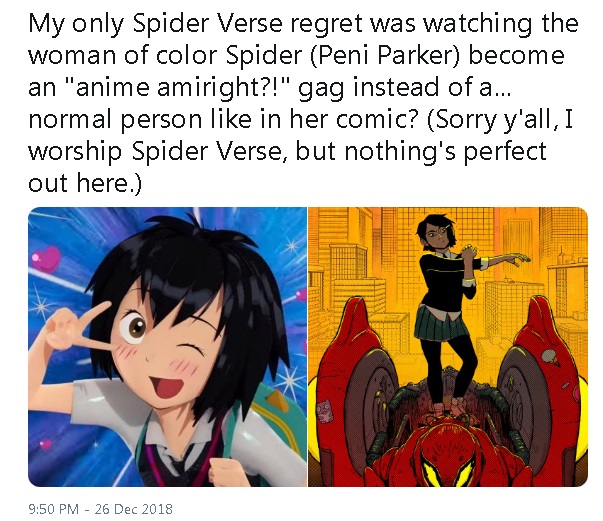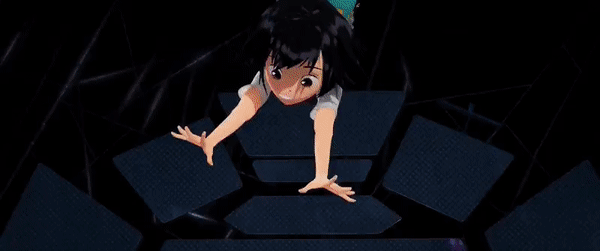Rising of the Shield Hero is yet another “virgin nerd gets transported to a fantasy world in order to save it while creating a harem for himself”, but with one difference: it’s much creepier than usual. Sure, other isekai series come with dodgy attitudes towards women and unfashionable opinions about slavery, but Shield Hero takes it all up a notch. It’s also insanely popular for something that is as generic as it is — see the video below for more on that — which I got to experience first hand when some fanboys took exception to my offhand criticism of it on Twitter yesterday. so I thought I’d expand this criticism in this post.

The first episode of the Shield Hero anime adaption starts with a quick look at our hero Naofumi’s everyday life before he got transported to another world, just like every other isekai anime does. Noticable is a small incident in which he bumps into two school girls, who are laughing together and ignoring him. This is a subtle not so subtle harbinger of what’s to come. When he’s transported to the fantasy world he has to save, it turns out he’s one of four such heroes summoned and he has the worst power of the lot, a shield he cannot take off and with which he can only defend, not attack. Also for some reason everybody is a dick to him: the people who summoned him and his fellow heroes both. That’s because he’s the second type of isekai protagonist: the seemingly underpowered weakling who’s looked down upon by everybody else but who will have his revenge in the end. Such a hero is always treated unfairly in the start, belittled and humiliated, because that makes the inevitable come uppance to all his tormentors all the sweeter. Therefore when each of the four heroes get companions assigned to them, none of those choose him, until one woman takes pity on him.
This is of course a trap; she betrays him because the story needs her to do so, but not until after he bought her armour and weapons. This in itself is an annoying cliche, the gold digger who betrays our pure and naive hero, but the way it’s done makes it so much worse. Because she doesn’t just take his money and runs, she actually accuses him of attempting to rape her. The fake rape accusation trope is one that needs to die in a fire — along with its cousin rape as background trauma — because it reinforces the idea that women lie about this constantly when in reality it’s difficult to get any rape accusation to be taken seriously and fake accusations are extremely rare. Here it’s used to justify Naofumi’s mistrust of women as well as the solution he turns to when, rejected by everybody, he still needs companions to fight for/with him so he can level up and abe able to fight the evil Waves threatening the world.
That solution is slavery. At the end of the first episode he’s seduced by a slave trader to visit his shop, having spent his time trying to get stronger on his own and not getting anywhere. The episode ends when he lays eyes on the tanuki girl who will become his first battle slave. The idea here is that because his shield is a defensive weapon, he needs somebody to fight for him but nobody is willing to do so. Furthermore, the only way Naofumi himself can trust anybody is if they’re literally unable to betray them and that’s where the slaves come in, because the seals they have on them make them suffer excruciating pain when only thinking about being disloyal. So by buying a slave girl Naofumi has somebody he can trust and somebody who can fight for him.
Now you could’ve had the same story without using either a fake rape accusation or your hero buying slave girls, but that’s the whole point of this particular nerd resentment fantasy. The point is that you cannot trust women, that the only way to be able to is if they’re literal slaves that cannot disobey you and that slavery is in fact not at all a bad thing when you have a nice master. Time and again Naofumi extends his slave harem by buying or rescuing girls from evil owners and each and every time they fall in love with him because he’s such a good master. Of course, the woman that betrays him meets an appropriately gruesome fate, raped and murdered and then apparantly raped and murdered again, though that may only happen in the original web novel as I haven’t read that far ahead in the light novel and manga.
With Shield Hero then you get a story that’s part revenge fantasy, part slave harem fantasy where you can pretend all the girls are happy being slaves and all trash, but not the fun kind of trash. I don’t actually mind power fantasies all that much normally, but not when it’s this creepy.

